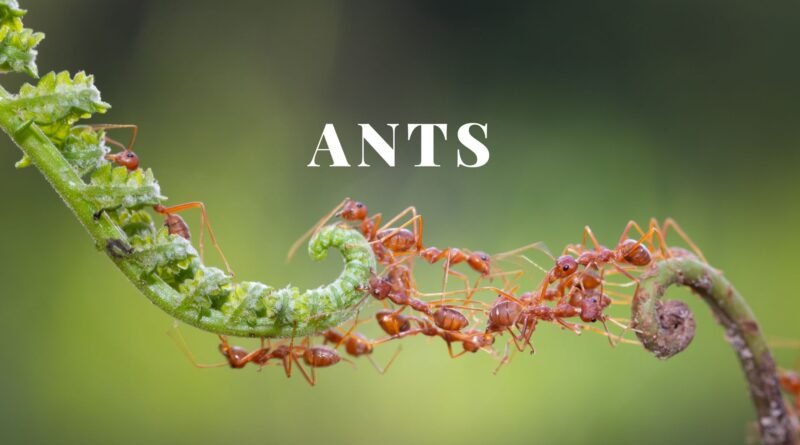Ants have an interesting policy to adjust in any environmental changes: It’s divide and rule
A team of four scientists discovered that wood ant colonies can adjust to any environmental changes with their divide and rule policy. The wood ants alter their social network topology to survive in any environmental changes.
Ant Colony:
All of us, at some point in our lives, have come across ant colonies as they take over around 15–20% of the terrestrial animal biomass.
Ants are tiny, committed, and eusocial creatures. They care for their loved ones, live together in harmony, and all devotedly and systematically work for the betterment of their colonies according to their social rank: queens, soldiers, and workers.
For centuries, ants colonies have been a subject matter for several scientific studies. Many ant species have multiple sub-colonies and social networks (nests) in one main colony. Maybe similar to humans: country-state-city-and so on. Never mind, ants are more organized than we are. Just saying.
Ants colonies that have multiple sub-colonies inside the main colony are known as polydomous colonies. Such architecturally complex ant colonies are dynamic prompting scientists to understand and uncover the roots of social networks in them. Why do ants have so many sub-colonies? How do they collaborate with each sub-colony? What are the rules in an ant colony?
Ant species with polydomous colonies get several advantages: they hunt and share food resources, protect each other against natural disasters and predators.

“Ant species with polydomous colonies may benefit by increasing foraging efficiency, becoming each other shields against predators, and increasing competitive dominance”, say the scientists.
Scientists have studied diverse reasons behind ant complex social structures. In a 2019 study, Cédric Sueur (an associate professor at the University of Strasbourg) and his team demonstrated how factors like predation, infectious agent risk, information sharing, mating system, stress, and food distribution may affect the ants’ social network topology. The research article was published online in an international journal of primatology called Primates, 60 on 11th September 2018.
Divide and Rule:
To further investigate what factors may affect the ants’ social network topology, researchers from the UK decided to observe polydomous colonies of wood ants.
The research team included Dominic D. R. Burns, Daniel W. Franks, and Elva J. H. Robinson from the Department of Biology, University of York, York, UK, and Catherine Parr from the Department of Earth, Ocean and Ecological Sciences, University of Liverpool, Liverpool, UK.
The research team, after 5 years of extensive observation and trials, discovered that wood ants can survive any environmental changes by further dividing them into small sections. Woods ants divide themselves into smaller chunks to rule in new environmental changes.
In 2012, a team of four researchers investigated the food distribution hypothesis i.e, food resources can disrupt ants’ social network topology.
The research team researched Longshaw Estate in the Peak District where they found almost 900 ant nests from several polydomous colonies. After finding the nests, the research team found that almost all the polydomous colonies belonged to hairy wood ants (Formica lugubris).
To study the effect of food availability on ants’ social network topology, the research team used 10 polydomous colonies. For four years, the research team observed the foraging activities and sites of the wood ants. They followed the ants on warm and sunny days between 10:00 AM and 06:00 PM and drew maps.
Prior to experiments, the research team also observed the social network topology of all 10 colonies. They wanted to see what changes in food limitation will bring in wood ants’ social structures.
After observing the wood ants’ social network topology and mapping foraging activities for 4 years, the team was ready to conduct experiments. The research team covered the trunk of trees where the wood ants regularly forage.

After observing the woods ants foraging activities and social network topology for a complete year (2016-2017), the research team, interestingly, found a worth-notifying impact of food resource distribution. The 10 wood ants colonies significantly changed their social network structure. All 10 polydomous colonies changed their inter-nest networks after the exclusion experiments.
The team also observed that nests that were previously hunting aphids on an excluded food source lost connection with the main colony. After losing the connection, the nests scattered into small independent colonies.
When met with blocked paths, all the sub-colonies changed their foraging patterns. This change in foraging patterns also disturbed the food distribution across the main colony.
The change in food distribution dramatically altered the internet network topology. Prior to experiments, the colony was stable and composed, but after the changes in resource availability, the whole colony split into many independent components.
But, the split had no negative effect on the newly-formed colonies. All the newly-formed colonies became independent and kept foraging on novel trees. Thus, providing substantial evidence for the researchers to discover that polydomous wood ants’ colonies can adjust to environmental changes with a divide and rule policy. The wood ants alter their social network topology to survive in any environmental changes.
The final study was published online in a renowned journal, Journal of Animal Ecology, Volume 90, Issue 1, on 06 March 2020.




